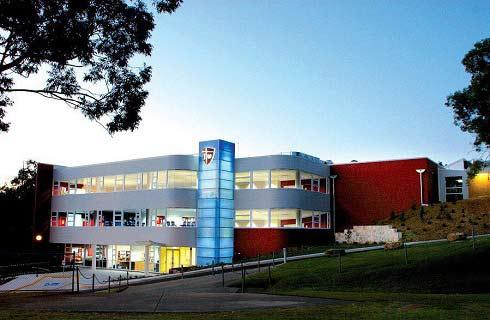Doctor of Philosophy in Chemistry - Nanomaterial Synthesis

学历文凭
Ph.D.

专业院系
Department of Chemistry

开学时间

课程时长

课程学费

国际学生入学条件
Official transcript(s) are required from all undergraduate and graduate schools you have attended. For reviewing purposes, electronic copies of transcript(s) can be uploaded through the online application system to meet the application requirements. The online application has an area to include your Research Experience such as articles, publications, or creative work. In addition, there is an area to upload your Resume or Curriculum Vitae (optional). A minimum of three (3) letters of recommendation are required. Generally these letters are written by faculty who are familiar with your work and can address your potential for success in graduate school and beyond. Once listed, recommendation requests are sent via email to the recommender after the applicant prompts the application system to do so. Students must score at least 90 on the iBT (internet-based) TOEFL, at least 620 on the paper-based TOEFL, or at least 250 on the computer-based TOEFL. For students who choose to take the IELTS in lieu of TOEFL, the minimum score is 7.
IDP—雅思考试联合主办方

雅思考试总分
7.0
- 雅思总分:7
- 托福网考总分:90
- 托福笔试总分:620
- 其他语言考试:NA
CRICOS代码:
申请截止日期: 请与IDP联系 以获取详细信息。
课程简介
The Department of Chemistry at Rice University places a strong emphasis on nanomaterials synthesis, characterization, assembly, and their applications. Historically this started in the 1980s with the discovery of C60, buckminsterfullerene, which led to the 1996 Nobel Prize in Chemistry for Rice Professors Richard Smalley, Robert Curl and then visiting Professor Harold Kroto. This launched a carbon nanomaterials emphasis at Rice that rapidly expanded to nanomaterials of many types. This includes anisotropic noble metal nanoparticles, metal oxide nanoparticles, carbon nanotubes, semiconductor nanocrystals, 2D materials such as graphene and metal chalcogenides, MXenes, mixed-metallic nanoparticles, graphene quantum dots, graphene nanoribbons, and boron-nitride nanomaterials. New growth mechanisms are developed for the bottom-up fabrication of these materials, such as the laser-induced synthesis of graphene, colloidal wet-chemistry approaches to highly-crystalline nanoparticles of well-defined size and shape, and the synthesis of nanomaterials at the jet-head of 3D printers en route to 3D monoliths.
相关申请
 预科
预科 奖学金
奖学金 实习机会
实习机会 在校学习
在校学习 跨境学习
跨境学习 校园授课-线上开始
校园授课-线上开始 在线/远程学习
在线/远程学习
开学时间&学费
学费信息仅供参考,请与IDP联系以获取详细信息
| 开学时间 | 时长 | 学费 | 地点 |
|---|
学校排名

世界排名86
数据源:
泰晤士高等教育世界大学排名
关于莱斯大学

莱斯大学是西南部最好的大学,在整个南部也只有杜克能与其相提并论。多年来以科学、工程、艺术、人类学闻名,并始终秉承低廉的学费与高水平教学并存的态度。建筑学是全美最好的本科项目之一,同时它的空间物理学科与美国国家航空航天局紧密合作。在梅隆研究员项目中,人文和社会科学专业将与教师导师们合作,共同进行学术项目的研究,同时会提供一定的夏季研究津贴。莱斯大学鼓励学生们选双专业、甚至三专业科学与工程学都是最好的学科,因此,这两门学科的竞争也特别的激烈。学校大概有4%的学生选择了双专业。,而且经常是“电气工程”和“艺术史”这种看起来毫不相干的领域相搭配。生物科学是最受欢迎的学科,其次还有运动学,经济学,心理学和英语。
本校相关课程
其他相关课程

化学哲学博士[量子信息合作计划]
 滑铁卢大学
滑铁卢大学学历文凭
Ph.D.
开学日期
课程费用总额


化学理学硕士[量子计算合作计划]
 滑铁卢大学
滑铁卢大学学历文凭
Masters Degree
开学日期
课程费用总额


化学哲学博士
 滑铁卢大学
滑铁卢大学学历文凭
Ph.D.
开学日期
课程费用总额


化学理学硕士
 滑铁卢大学
滑铁卢大学学历文凭
Masters Degree
开学日期
课程费用总额


化学理学士(荣誉学位)
 滑铁卢大学
滑铁卢大学学历文凭
Bachelor Degree with Honours
开学日期
课程费用总额


化学科学硕士
 劳伦森大学
劳伦森大学学历文凭
Masters Degree
开学日期
课程费用总额










 美国
美国





